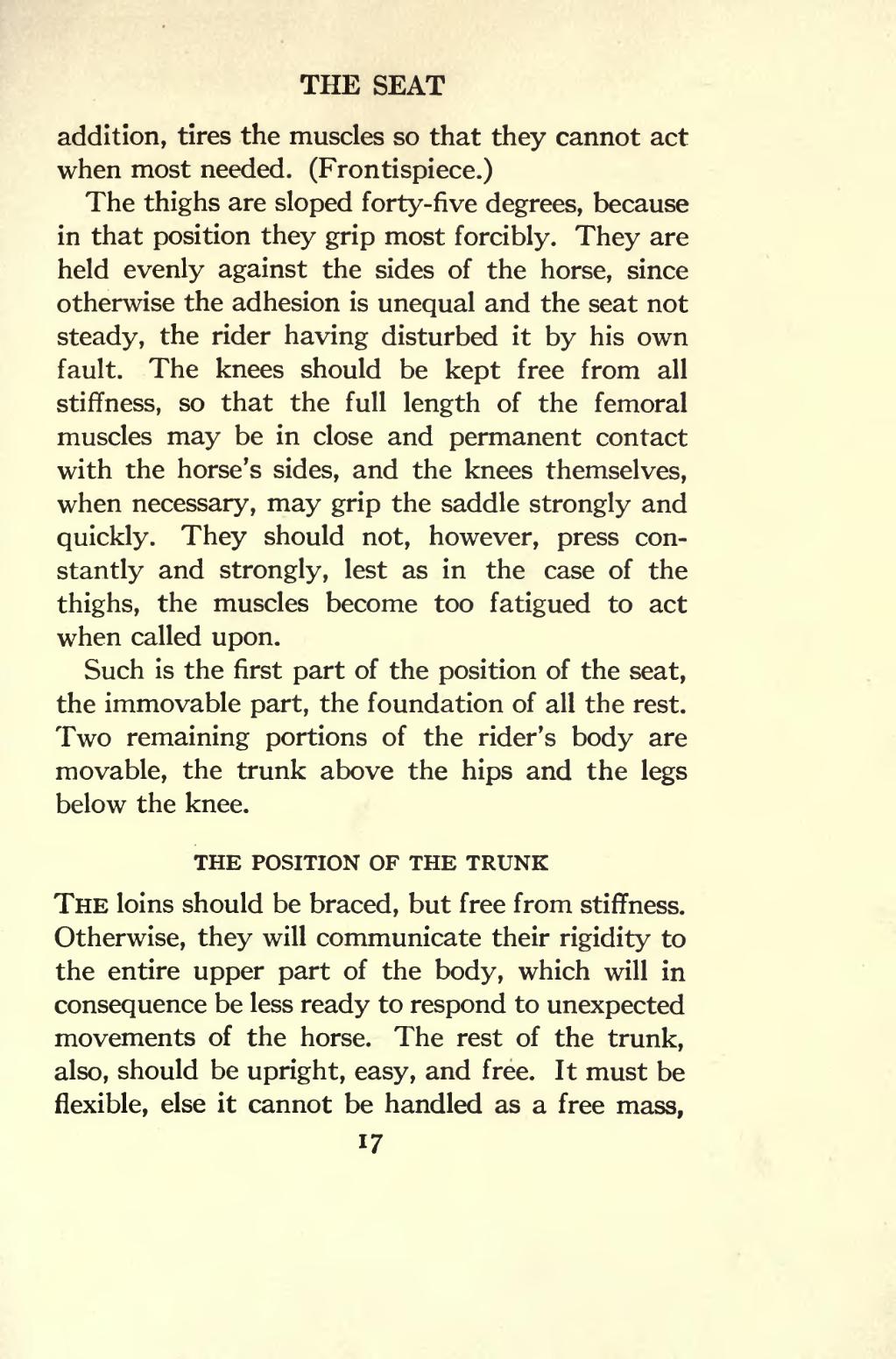addition, tires the muscles so that they cannot act when most needed. (Frontispiece.) The thighs are sloped forty-five degrees, because in that position they grip most forcibly. They are held evenly against the sides of the horse, since otherwise the adhesion is unequal and the seat not steady, the rider having disturbed it by his own fault. The knees should be kept free from all stiffness, so that the full length of the femoral muscles may be in close and permanent contact with the horse's sides, and the knees themselves, when necessary, may grip the saddle strongly and quickly. They should not, however, press constantly and strongly, lest as in the case of the thighs, the muscles become too fatigued to act when called upon.
Such is the first part of the position of the seat, the immovable part, the foundation of all the rest. Two remaining portions of the rider's body are movable, the trunk above the hips and the legs below the knee.
THE POSITION OF THE TRUNK
THE loins should be braced, but free from stiffness. Otherwise, they will communicate their rigidity to the entire upper part of the body, which will in consequence be less ready to respond to unexpected movements of the horse. The rest of the trunk, also, should be upright, easy, and free. It must be flexible, else it cannot be handled as a free mass,
